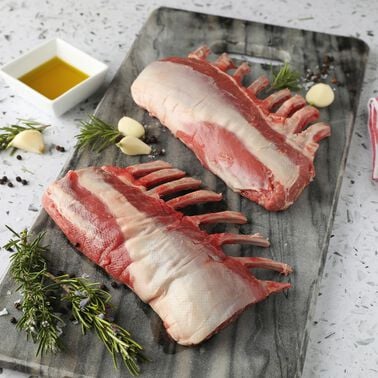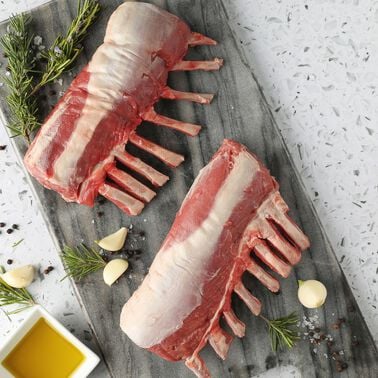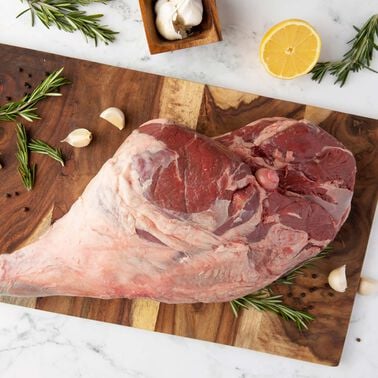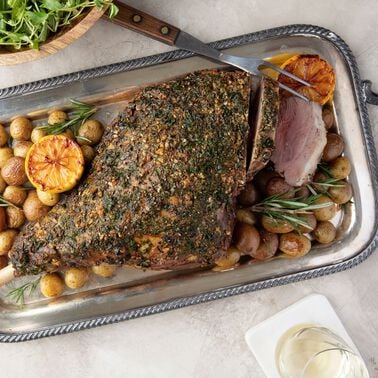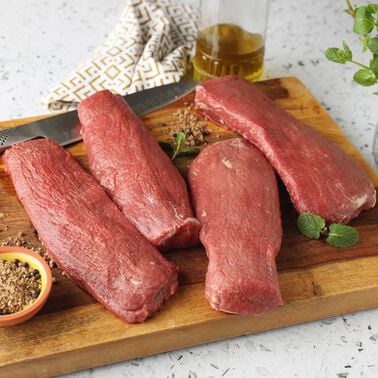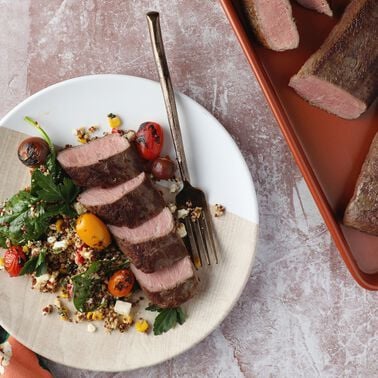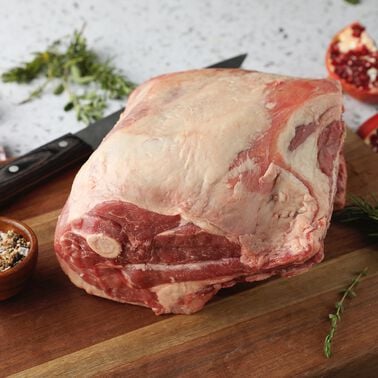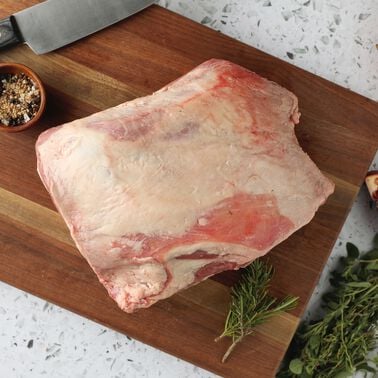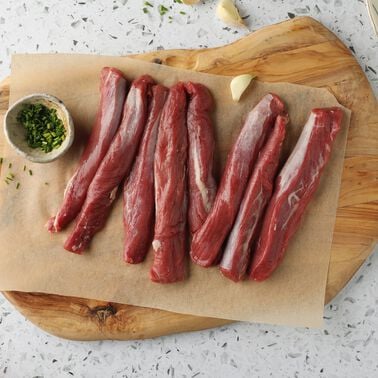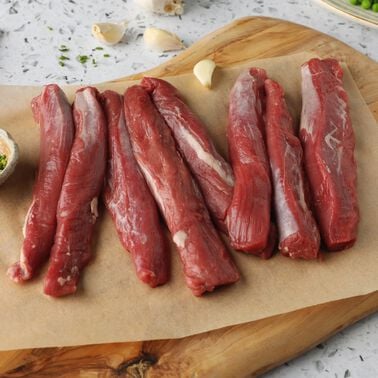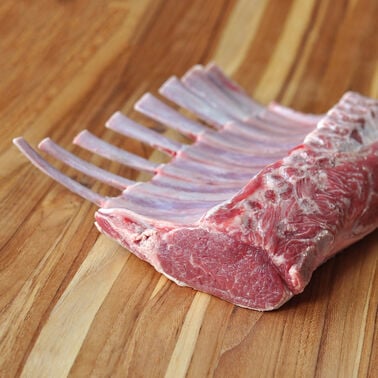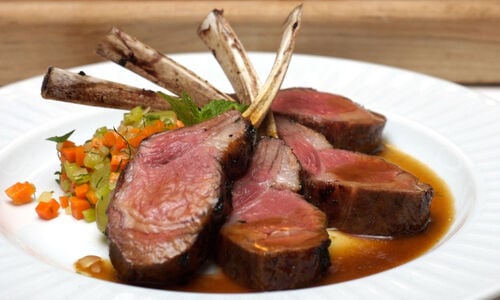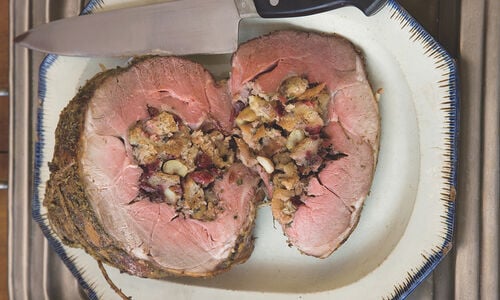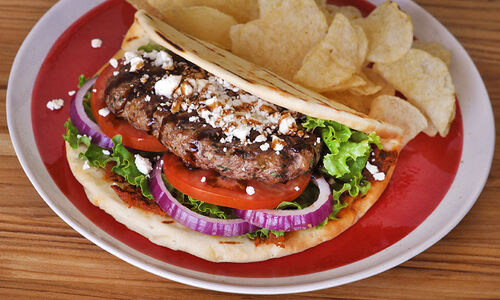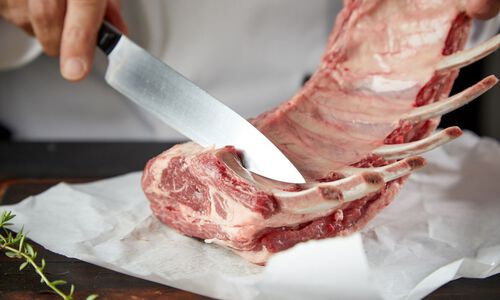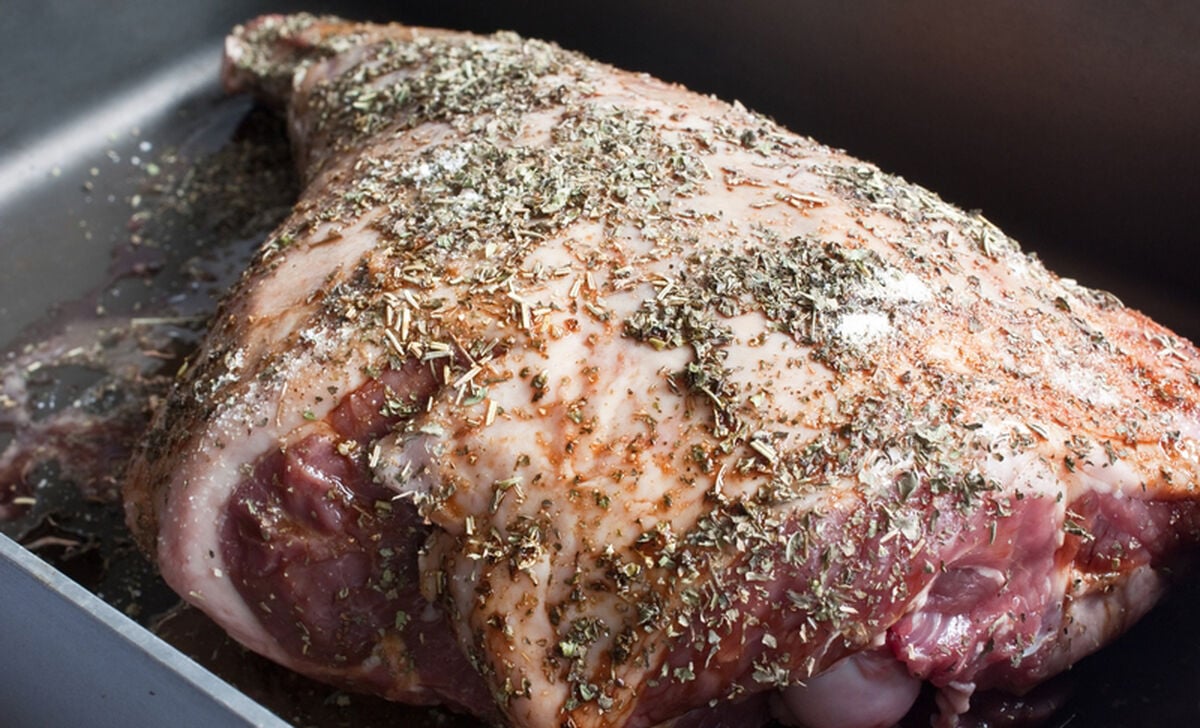
Well, let's not let that continue any longer, shall we? In the exact same fashion that creatures that moo and oink provide us with a bounty of gastronomic glee, so does the humble Ovis aries. With a heady, distinctive flavor and a texture similar to beef - especially when certain cuts, such as the chops and tenderloin, are prepared medium-rare - the options available to a cook with lamb are no less than staggering. And, best yet, many of those options are not particularly difficult. Given some time and care, however, any lamb-loving home cook can surprise friends and loved ones with a savory and sophisticated meal. Here are some favorites of ours.
Classic Rack of Lamb
Is there really anything more beautiful and classy than an expertly cleaned and "frenched" rack of lamb? Hardly. The rack - being a whole or half rack of rib chops - is considered by many to be the most desirable cut. We recommend mixing garlic, fresh herbs (parsley, thyme, rosemary, sage), olive oil, and breadcrumbs, then coating the lamb rack using some Dijon mustard to adhere the mixture to the meat. Roast until medium-rare, et voilà: You are a culinary superstar (or will be to your guests).
BBQ Lamb
Believe it or not, not all American barbecue incorporates beef or pork. Western Kentucky, in fact, is known for its use of lamb - or in this case "mutton," an older sheep - in the pit. Mutton takes particularly well to the low-and-slow smoking method preferred by BBQ purists since the meat is tough and fatty compared to a younger lamb. Traditionally, it's enjoyed with a sauce comprised of vinegar and hot peppers, known as "mutton dip." When barbecuing lamb, we suggest using the shoulder.
Lamb Sausage
The options for making sausage out of lamb are dizzying, but we're particularly partial to merguez, the spicy lamb sausage native to Northern Africa and popular in France. When you mix lamb together with harissa seasonings (coriander, hot chiles, cumin, garlic paste, etc.), you don't even need to use a commercial sausage maker or casings to enjoy your merguez, as it's just as wonderful grilled or fried in patty form and served atop couscous with cilantro and golden raisins.
Lamb Neck
Often seen as one of the least desirable parts of the animal, those wise among us in the land of lamb know that when you slowly braise the neck, you'll be rewarded with a rich, fragrant sauce as the tough connective tissues break down and melt. We love using the neck as the base for lamb stock, which you can use to make hearty stews or curry or to further braise larger cuts, such as the shoulder or brisket.
Whole Leg of Lamb
If you have a festive occasion, you might consider roasting an entire leg of lamb, as was once done in the courts of kings and queens during the Middle Ages. In fact, when it's rubbed with rosemary, garlic, and olive oil and simply roasted in the oven, we feel that a lamb leg is an occasion unto itself, a feast worthy of its own celebration.
Lamb Bacon
Who says that bacon has to come from pigs? If you're a fan of curing and smoking your own meats, it would behoove you to experiment with a lamb belly. Just as salty and savory as its porcine friend, but with that distinctive, pungent lamb flavor, it will certainly take your breakfast - or any other meal, for that matter - to the next level.
Lamb Shank
As opposed to much of the rest of the lamb, the shank (the forelimb of the animal) is relatively lean and wonderfully suited to slow cooking, which results in juicy, tender meat that falls apart in strands. Cooks often cube the shank meat to be used in stews, but we love substituting a lamb shank for veal in our favorite osso buco recipe for a surprising change of pace.
